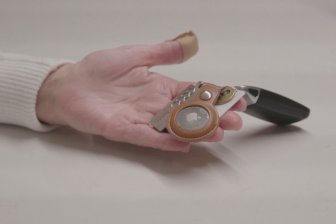As the Ford government strategized ways to cut down on the COVID-19 surgical backlog, provincial health officials set aside a small pot of public funding for private hospitals and independent heath facilities, according to documents obtained by Global News.
A Ministry of Health presentation on the province’s surgical and diagnostic recovery reveals that the Ford government planned to increase the role of two private hospitals as part journey back to pre-pandemic levels.
The document said the two private hospitals — Don Mills Surgical Unit and Clearpoint Surgical Toronto — had been given $8 million over the past two years “to achieve over 3,300 additional surgeries.”
Read more:
Ford government documents admit low wages, Bill 124 worsening health staffing issues
Read next:
Animal tranquillizer xylazine is now in Canada’s street drug supply. Here’s what to know
Another $5 million in public funds has been earmarked for 2,100 procedures at the private hospitals in the 2022-23 year, the slide said.
“The ministry is committed to continuing to leverage all available capacity to reduce wait times,” the presentation stated.
The funding for private hospitals, however, comes as the Ford government faces increased scrutiny over its dedication to a publicly funded health-care system. The minister of health indicated the province was considering “innovative” solutions to deal with a stretched health care system.
“We want to be clear, Ontarians will always use their OHIP card to receive healthcare services across the province,” a spokesperson for the ministry of health told Global News in a statement regarding the private hospital funding.
“These facilities already, and will continue to, perform publicly (OHIP) funded procedures and will ensure patients have access to the healthcare they need and deserve.”
The spokesperson did not address a detailed list of questions, including the specifics of any agreements with for-profit health-care providers.
Details of the for-profit health care options presented by the ministry of health.
Global News
The ministry’s surgical backlog presentation, obtained by Global News through a freedom of information request, also indicates the province has been giving millions of taxpayer dollars to 17 independent health facilities to increase access to services.
In a 2012 report, Ontario’s auditor general said independent health facilities have long been part of the province’s health care system and come at no cost to users, but “are independently owned and operated, and 98 per cent of them are for-profit corporations.”
They provide services such as x-rays or ultrasounds in a non-hospital setting.
Read more:
Strain on Ontario hospitals lessens amid drop in respiratory illness
Read next:
First-of-its-kind housing coming to Edmonton for homeless patients after hospital visits
As the province faced a growing backlog of medical procedures during the pandemic, Jones was briefed by ministry staff on the role for-profit intuitions could play.
The document obtained by Global News is undated but was part of a batch of presentations and reports released from Jones’ transition binder, created to inform her of her new role when she became minister of health in June 2022.
“As part of the Surgical Recovery Strategy, community-based IHFs or Private Hospitals are being leveraged to help increase capacity of routine, low-risk, publicly funded surgical and diagnostic imaging procedures/services (e.g., cataracts, hernia repair, plastics, MRI/CT),” the presentation said.
Over the past two years, the document said, a total of $18.5 million had been spent across 17 IHFs to fund around 4,000 extra surgeries and 60,000 MRI and CT scan hours.
A further $18.4 “in one-time incremental volumes will be allocated to IHFs” pending approval, it added. Officials did not confirm or respond to questions asking if this approval had been granted.
Read more:
Ontario ER, urgent care centre to temporarily close amid labour shortages
Read next:
U.S. nixes gas stove ban despite studies showing health risks, dangers
Another auditor general report published in 2021 found there was “inconsistent oversight and co-ordination of outpatient surgeries” delivered by different providers, including independent health facilities.
As part of the report, the auditor general used mystery shoppers who made 80 phone calls to 25 providers of outpatient procedures, including a private hospital and independent health facilities.
The report said that some of the clinics called, which included independent health facilities, provided misleading information, including telling them that specialty lenses not covered by OHIP were necessary.
“Some clinics indicated that the standard eye testing covered by OHIP is of inferior quality and that add-on tests provide more thorough and accurate results,” the 2021 report said.
“While there may be benefits to undergoing add-on tests, specifically when opting for a specialty lens, these clinics are misleading patients by indicating that the OHIP-covered testing is inferior.”
The Ministry of Health did not address questions from Global News asking if there were provisions within the expanded funding agreements for private hospitals and independent health facilities to ensure patients using OHIP were not upsold.
In total, the presentation suggests as much as $23.4 million has been set aside for private and for-profit health care providers to assist with Ontario’s hospital recovery over the 2022-23 year.
While that number represents as a relatively small proportion of the $300 million set aside for surgical recovery in 2023, critics say it could be a step on the road to privatization of Ontario’s health care system — and argue the money should be spent in hospitals.
“We’ve got operating rooms in the public system that are not operating and instead they’re going to fund these private clinics, which will cost more and fragment the system,” said Ross Sutherland, chair of the board of the Ontario Health Coalition.
“Take that $24 million and put it into the public hospitals,” he added.

In November, Global News reported that talking points offering a forceful denial of privatizing Ontario health care had been removed from the minister of health’s house binder.
One sentence — “No, we are not privatizing healthcare” — was scratched out with pen, as was another: “I want to be clear, there has been no expansion to the number of private hospitals who offer publicly funded procedures in Ontario.”
Speaking on Wednesday, Ford signalled the role of for-profit health-care providers was likely to continue to increase.
“I don’t even like the word private because it’s really not — I can assure you; no Ontarian will ever have to pay with a credit card, they will pay with their OHIP card,” the premier said, noting that independent health facilities would be called upon to take “the burden” off hospitals.
 Asian Tribune Your Multilingual Newspaper covering World and local news News
Asian Tribune Your Multilingual Newspaper covering World and local news News


